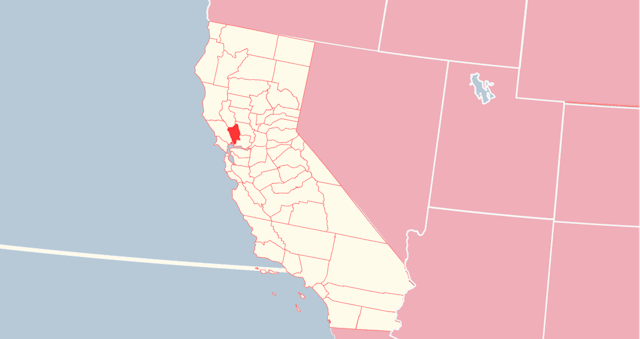Rehabs in Napa
Napa County is in the north of San Pablo Bay and is a northern part of the US State of California. Its traditional center is in the City of Napa. According to the 2020 US Census, the region had a population of 138,019.
The county’s history dates back to before California was ever granted statehood. The gold rush brought quick growth to the area. Moreover, many people enjoy visiting the local museums, galleries, and vineyards.
Unfortunately, the region feels the terrible effects of substance and alcohol misuse. From 2015 to 2017, there were 43 fatalities caused by drug overdose. However, the number of alcohol misuse is always on the rise.
The state established many drug and alcohol rehabs in Napa County to provide treatment for residents that want to control their dependency. Read the article to get the necessary data on the available rehabs in California. Seek help now and gain a healthier future!
Available Treatment Options
Many residents who experience substance abuse problems don’t want to get treatment in drug and alcohol rehabs in Napa County. In other words, they don’t want to stay at home, where they will be under the influence of the local triggers.
Even after detox, they may experience problems with addiction. People who have these severe issues may apply for inpatient care. Others with mild levels of addiction may attend outpatient or partial hospitalization programs.
Napa is struggling against the spread of substance abuse. Thus, they provide aid to those who want to end their addictions and reach a state of sobriety. The main prescription opioid use involves heroin and fentanyl.
Find below data on each treatment course and choose the one that best suits your recovery goals.
Detox
Detox is a primary step toward recovery. Before learning to live without drugs and alcohol, you have to clean your body of toxins. However, sometimes this withdrawal causes severe and painful withdrawal symptoms.
To ensure safe detox, one should be under the full control of the medical staff. To clarify, medical control increases the chances of successful recovery. Otherwise, the withdrawal may cause unbearable pain and have deadly outcomes.
Inpatient Program
Generally, there are two types of inpatient recovery courses available in Napa. The first one is a short-term program that lasts from 3 to 6 weeks. It consists of cognitive and behavioral therapies.
Also, it successfully uses individual and group counseling to address the addiction and its underlying mental issues. This type is intensive and highly restrictive. That is to say, patients have strict scheduling and have to participate in several daily meetings.
The other type of inpatient care is less restrictive and long-term. It is held in a community setting and lasts up to 6 months. The patient has to live in the hub. Besides they have to take part in sobriety groups, and therapy sessions and cooperate with professionals.
Outpatient
Outpatient recovery offers flexibility and independence to the clients. This is a good choice for those who have already completed a residential treatment course. It provides the same services as inpatient care; however, the patients don’t have to stay at the hub.
They can continue with their daily responsibilities, such as work and study or other family responsibilities. The patients are to spend 3-5 hours at the clinic daily. Moreover, they have a supportive environment outside the hub and maintain sobriety through the gained skills and education.
Partial Hospitalization Program (PHP)
PHP is between the two above-mentioned types of care. It is also known as day therapy. It helps the patients to slowly integrate into their home communities.
During PHP, the individual does not have to stay overnight, however, they are to spend at least 6 hours in therapeutic programs and visit the hub from 5 to 7 days per week.
Payment
People with various addictions before entering rehab, always worry about its costs. However, many health insurance agencies provide behavioral health insurance. Check with your private health insurance provider what type of coverage they provide and get financial aid.
Besides, many state-funded rehabs offer services at low or no cost at all. You may also apply for the assistance of Medicaid and Medicare.
Other means of payment include sliding scales, loans, and scholarships.

